PRK
PRK (Photorefractive Keratectomy), a type of Excimer Laser Vision Correction, was the first vision correction surgery procedure to gain FDA approval in 1995. Since then, this procedure has helped millions of people see the world more clearly. At Gordon Schanzlin New Vision Institute, our eye surgeons perform PRK at our state-of-the-art facility in La Jolla.


What is PRK?
When most people think of vision correction surgery, they think of LASIK. LASIK is used to correct refractive errors by reshaping the cornea. However, not all patients are suitable candidates for LASIK surgery. For many, PRK is an ideal
Trusted Source
Photorefractive Keratectomy
Somani SN, Moshirfar M, Patel BC
Go to Source
alternative to LASIK
.
PRK surgery is also a procedure that reshapes the cornea to improve a patient’s vision. However, while LASIK involves the creation of a corneal flap before reshaping,
Trusted Source
What is photorefractive keratectomy (PRK) eye surgery
Cleveland Clinic
Go to Source
PRK involves
the removal of the outermost layer of the cornea before it is reshaped. Because of this, the recovery period after PRK is slightly longer than that of LASIK and patients need to wait longer to realize their optimal vision. Still, PRK and LASIK have very
Trusted Source
A Comparison of Visual Outcomes and Patient Satisfaction Between Photorefractive Keratectomy and Femtosecond Laser-Assisted In Situ Keratomileusis
Hashmani N, Hashmani S, Ramesh P, et a
Go to Source
similar outcomes
and rates of patient satisfaction.
What does PRK Treat?
Through reshaping the cornea to improve the way light is refracted, PRK can treat refractive errors including:
Myopia (nearsightedness): This refractive error is a result of a cornea that is overly steep or an eye that is longer than normal. In patients who are nearsighted, light is focused in front of the retina. This causes blurring of images in the distance.
Hyperopia (farsightedness): In patients who are farsighted, the cornea is too flat or the eye is shorter than normal. This causes the blurring of near images because light is focused behind the retina.
Astigmatism: Irregularities in the shape of the cornea cause astigmatism. In patients with astigmatism, light is focused unevenly on the retina. This can cause blurred vision at all ranges.
PRK: What to Expect
Preparing for PRK
PRK is an outpatient procedure, and there is little our patients need to do to prepare. The first step in the PRK process, of course, is a thorough examination by a skilled ophthalmologist from our team. Once you are pronounced a good candidate for PRK, your procedure will be scheduled.
On the day of your PRK procedure, you should arrive at our practice without any makeup, lotions, or creams on your face. You will not be permitted to drive yourself home after the procedure, so you should make arrangements for a friend or family member to drive you to and from your appointment.
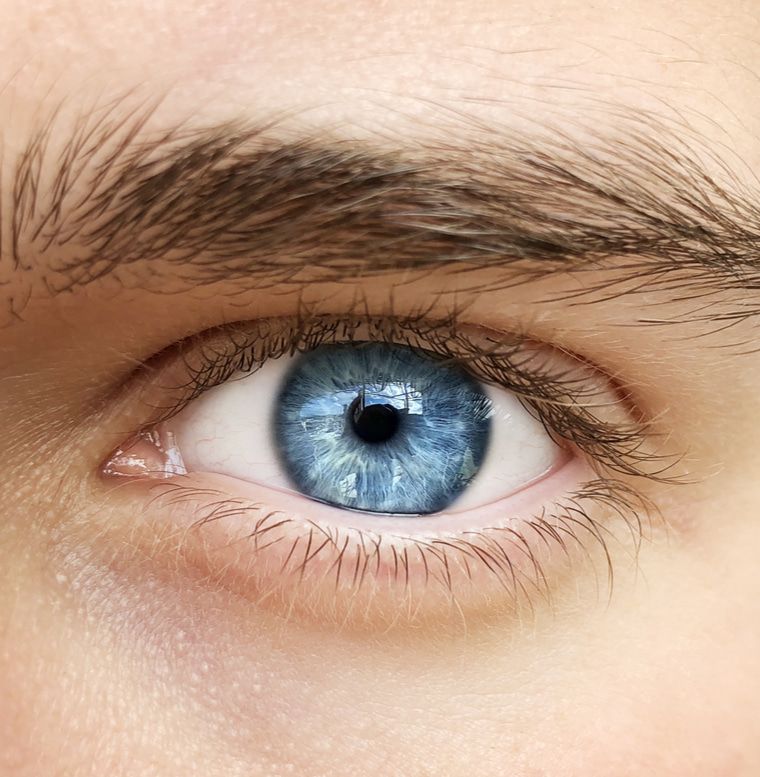
The PRK Procedure
Though the PRK procedure itself only takes minutes, you should plan to be at our practice for a few hours on the day of your vision correction surgery.
Before beginning the PRK procedure, your eye surgeon will apply anesthetic eye drops to numb your eyes. A device will be used to hold your eyes open and to prevent you from blinking.
Once your eyes have been numbed, your surgeon will remove the outer layer (epithelial layer) of your cornea to expose the underlying corneal tissue. Next, an excimer laser will be used to reshape the cornea, making it possible for your eye to properly focus light onto the retina.
Following PRK, you will have a temporary bandage contact lens placed over your eye so that your epithelial cells can regenerate. You’ll be given a final check by your surgeon after briefly relaxing in a recovery room, then you will be free to be driven home.
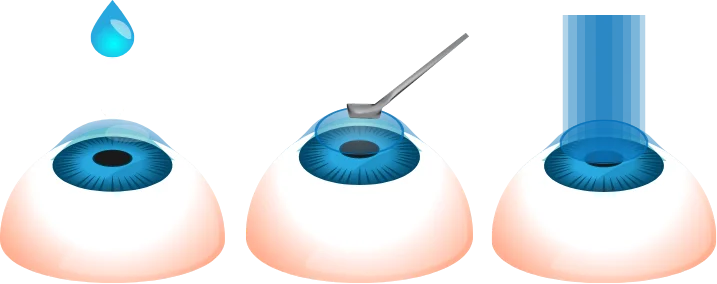
Recovery After PRK
Because the outer layer of the cornea is removed during PRK, this procedure has a slightly longer recovery period than LASIK. For the first 3-5 days after PRK, you will need to keep the bandage contact lens in place to allow your epithelial cells to regenerate.
You may feel some mild discomfort, itching, or burning as your eyes heal from PRK: this is normal and to be expected. Please do your best not to touch or rub your eyes as they heal.
After PRK, most of our patients take 2-3 days off of work to recover. You will attend a follow-up appointment with your surgeon, and will be cleared to return to non-strenuous physical activity within a week or two. You should notice your optimal vision correction results in about a month.
Frequently Asked Questions About PRK
Is PRK painful?
You should not experience any pain during your PRK procedure, as your eyes will be numbed with anesthetic eye drops before the surgeon begins. You may feel some mild discomfort during the healing process, but this will be manageable with over-the-counter pain medications.
What Are The Risks of PRK?
While any surgical procedure is associated with some risk factors, PRK is generally considered to be a safe procedure. Risks associated with PRK, while rare,
Trusted Source
Main Complications of Photorefractive Keratectomy and their Management
Spadea L, Giovannetti F
Go to Source
may include
:
- Discomfort
- Infection
- Problems with night vision, such as glares or halos
- Double vision
- Cloudy vision
- Dry eyes
- Under- or over-correction of refractive errors
Can PRK be performed on both eyes at once?
The best way to determine whether PRK is the ideal procedure for you is to consult with one of our ophthalmologists. In general, candidates for PRK:
- Are over the age of 18
- Do not have thin corneas
- Have good eye health
- Have good overall health
Contact Gordon Schanzlin New Vision Institute in La Jolla
At Gordon Schanzlin New Vision Institute, your eye health is of paramount importance to us. Our expert surgeons offer a number of laser refractive surgery procedures designed to safely help you see more clearly. If you would like to pursue clearer vision, potentially without the need for eyeglasses or contacts, and have been told you aren’t a good candidate for LASIK, PRK may be the ideal solution for you. To learn more about this procedure and the options available to you, please contact us to schedule a consultation with an experienced ophthalmologist.
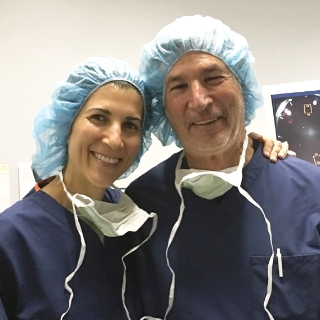
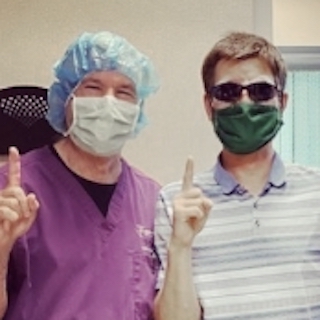
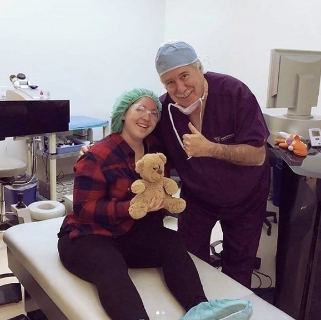
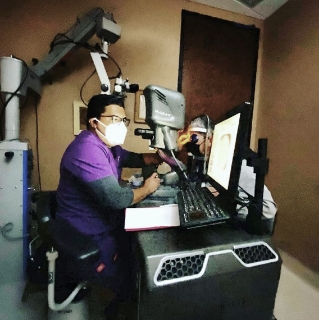
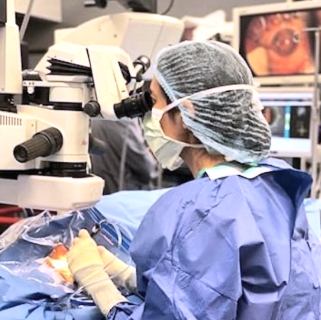
The Patient Experience
15 years ago Dr. Gordon allowed me to get rid of my lifelong "coke-bottle glasses" through PRK, giving me eyes that needed no glasses for distance or reading. This year Dr. Schanzlin removed my cataracts and replaced them with lenses that see 20/15 and read without glasses! Miracle workers, both of them! Their staff members are all amazing, kind, efficient, and technically adept. I can recommend this practice with my whole heart.
1 Somani SN, Moshirfar M, Patel BC. Photorefractive Keratectomy. [Updated 2021 Feb 25]. In: StatPearls [Internet]. Treasure Island (FL): StatPearls Publishing; 2021 Jan-. Available: https://www.ncbi.nlm.nih.gov/books/NBK549887/. Accessed July 7, 2021.
2 Cleveland Clinic. What is photorefractive keratectomy (PRK) eye surgery? Available: https://my.clevelandclinic.org/health/treatments/8596-photorefractive-keratectomy-prk-eye-surgery. Accessed July 7, 2021.
3 Hashmani N, Hashmani S, Ramesh P, et al. A Comparison of Visual Outcomes and Patient Satisfaction Between Photorefractive Keratectomy and Femtosecond Laser-Assisted In Situ Keratomileusis. Cureus. 2017;9(9):e1641. Published 2017 Sep 1. doi:10.7759/cureus.1641. Available: https://www.ncbi.nlm.nih.gov/pmc/articles/PMC5665689/. Accessed July 7, 2021.
4 Spadea L, Giovannetti F. Main Complications of Photorefractive Keratectomy and their Management. Clin Ophthalmol. 2019;13:2305-2315. Published 2019 Nov 27. doi:10.2147/OPTH.S233125. Available: https://www.ncbi.nlm.nih.gov/pmc/articles/PMC6885542/. Accessed July 7, 2021.
The doctors at Gordon Schanzlin New Vision Institute have either authored or reviewed and approved this content.
Page Updated:


